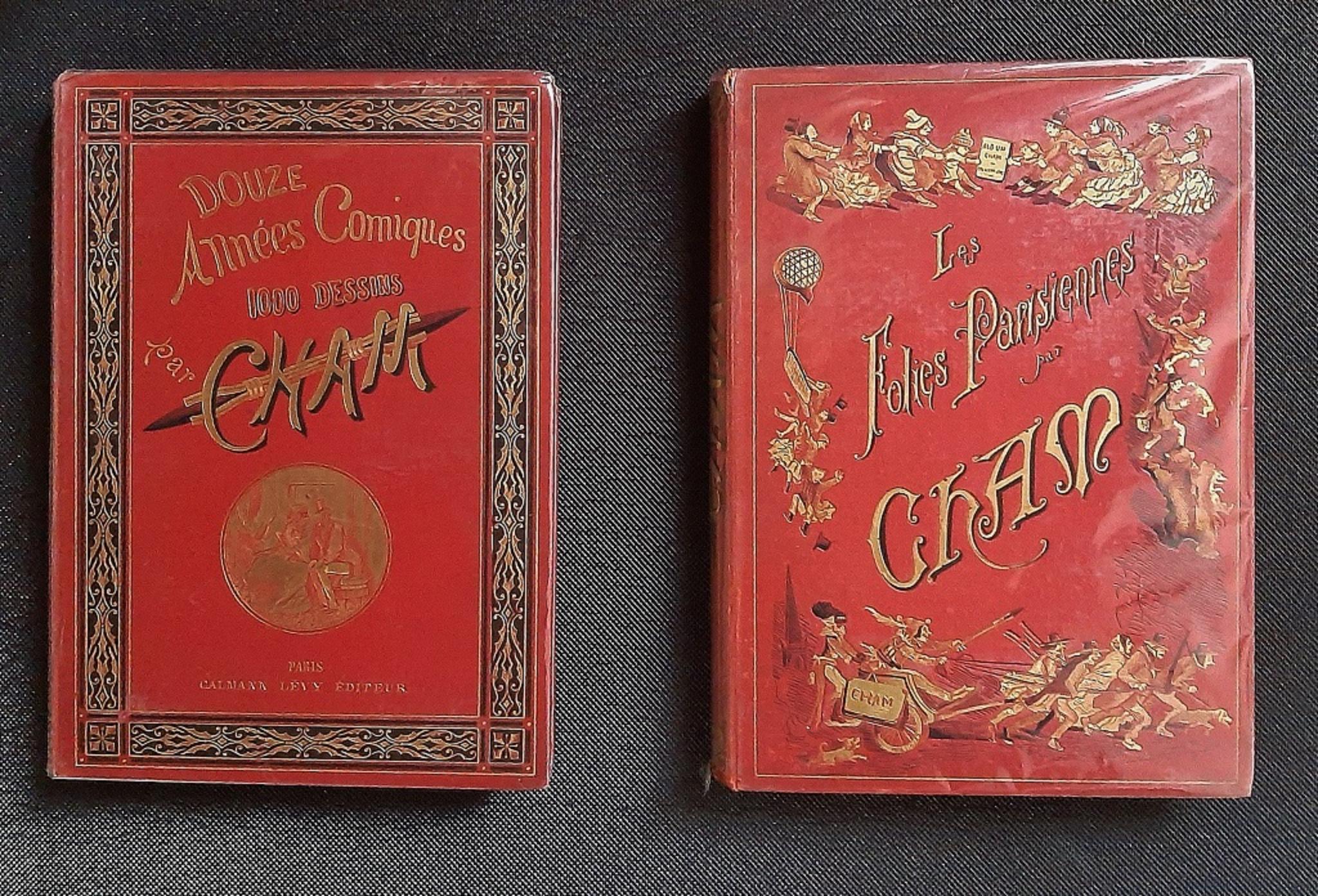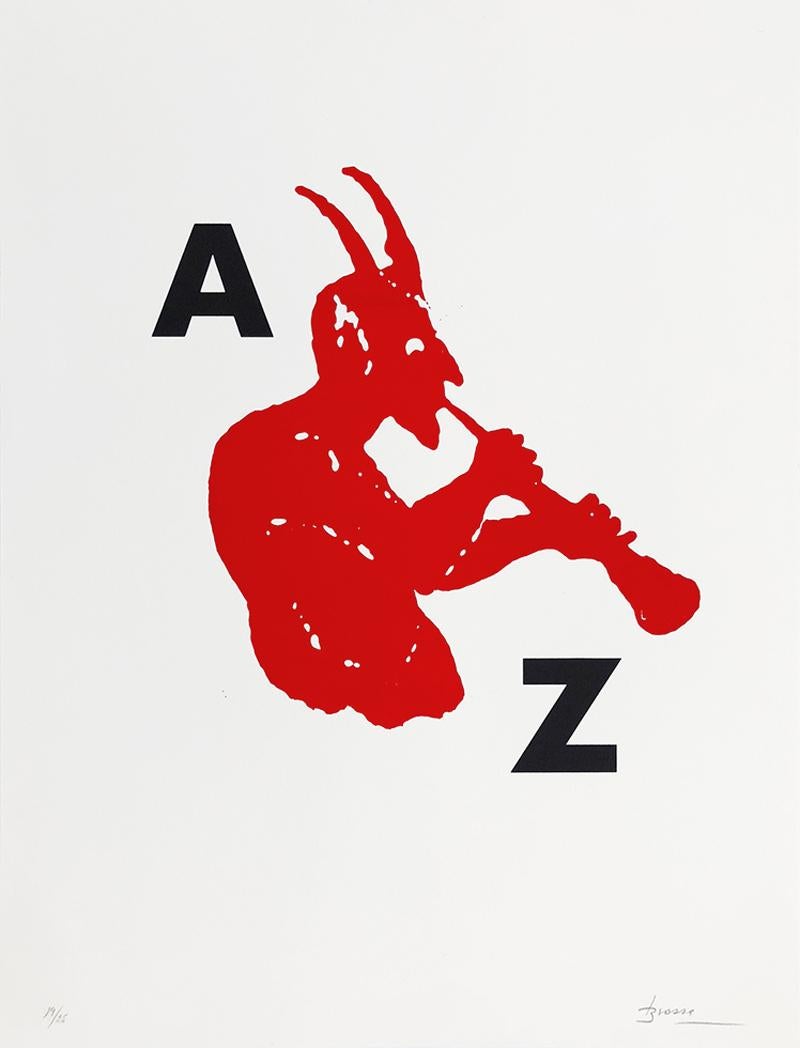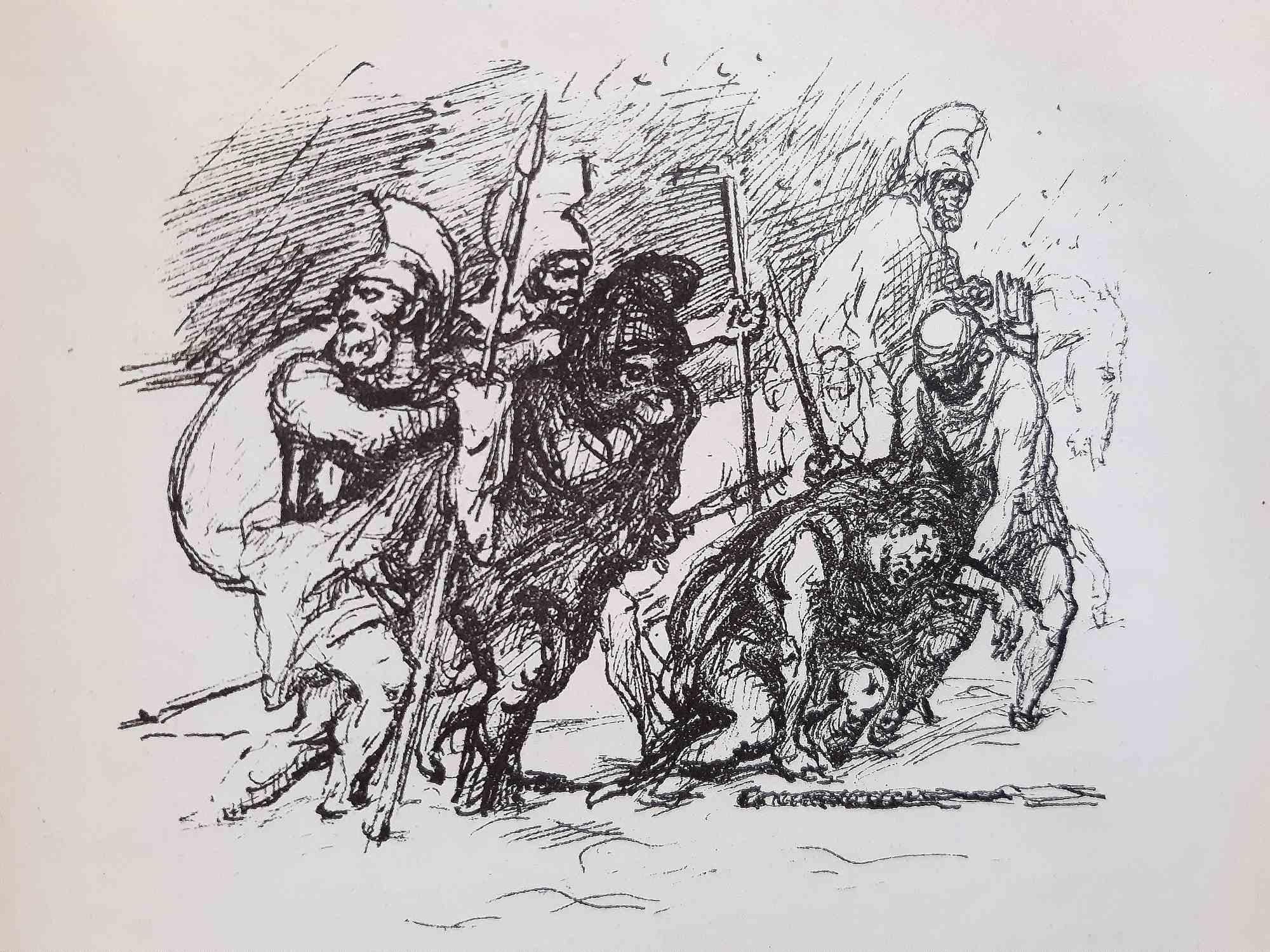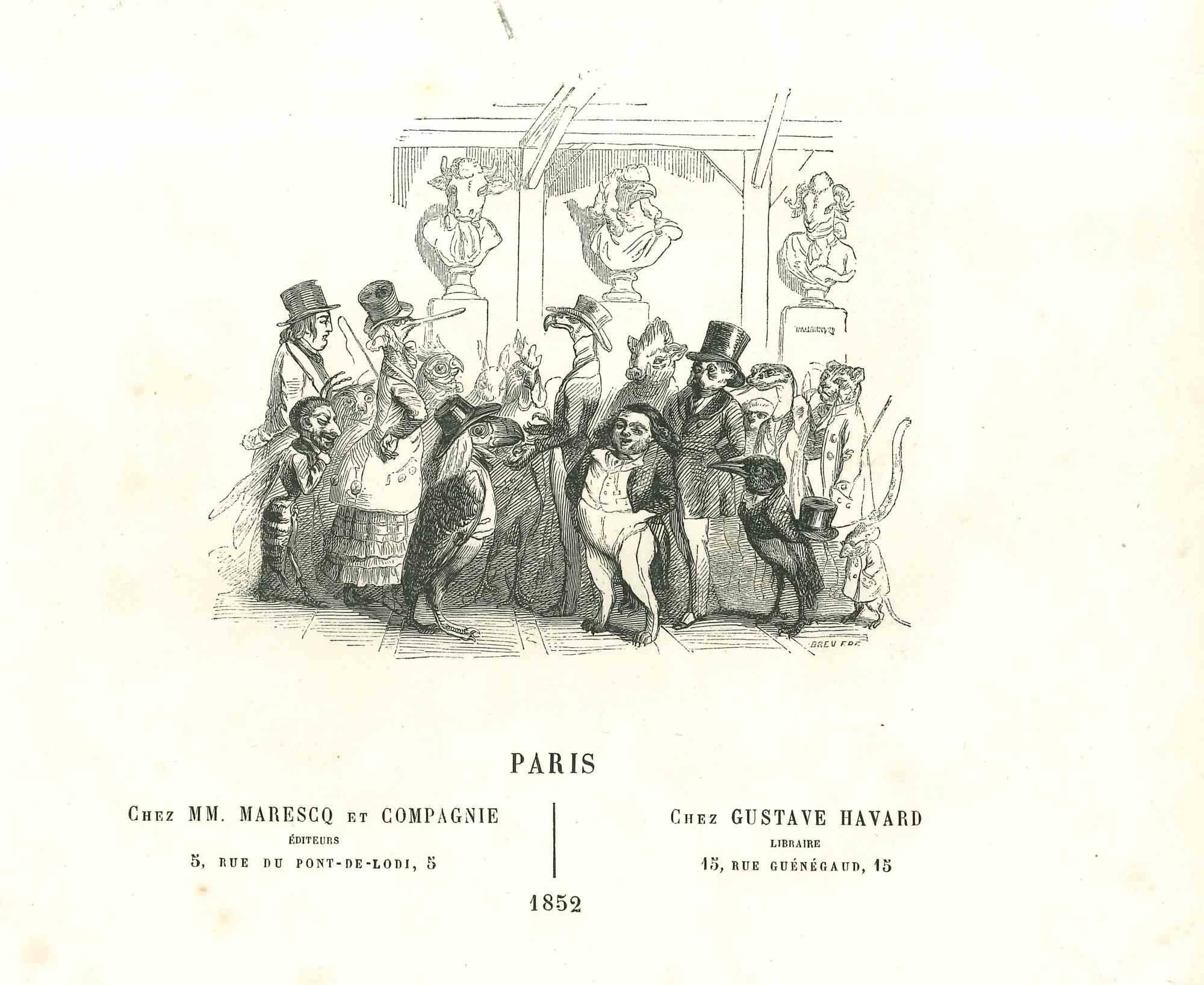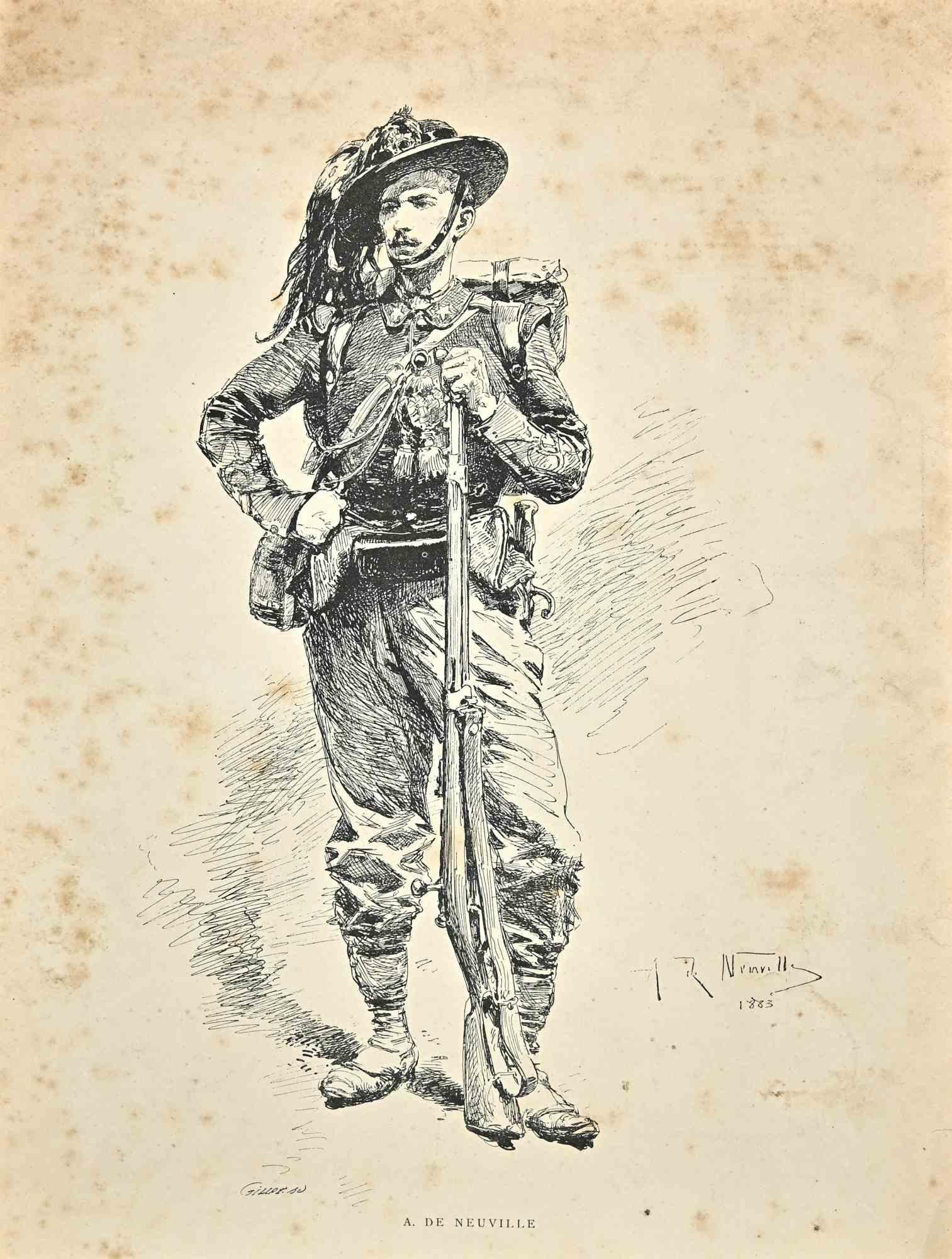Items Similar to Rare Palestine Antique Hebrew Judaica Yahrzeit Synagogue Sign Memorial Plaque
Want more images or videos?
Request additional images or videos from the seller
1 of 12
UnknownRare Palestine Antique Hebrew Judaica Yahrzeit Synagogue Sign Memorial Plaquec. 1890-1920
c. 1890-1920
About the Item
Circa 1890-1920. This Neoclassical, Judaic, Egyptian revival, Orientalist Mizrach sign, was produced in British Mandate Palestine by the chromolithograph process at the beginning of the 20th century. It pictures vignettes of holy places. with a hand written memorial. It was for the Tzedakah charity fund for the century-old institutions in Jerusalem: The great "Torah Center Etz Chaim"; a Free Kitchen for poor children and orphans; the famous Bikur Cholim Hospital with its dispensaries and clinics and the only Home for Incurable Invalids in Eretz Israel. They also worked with Arthur Szyk and Alfred Salzmann.. The A.L. Monsohn Lithographic Press (Monzon Press, Monson Press, דפוס אבן א"ל מאנזאהן, דפוס מונזון) was established in Jerusalem in 1892 by Abraham-Leib (or Avrom-Leyb) Monsohn II (Jerusalem, c.1871-1930) and his brother Moshe-Mordechai (Meyshe-Mordkhe). Sponsored by members of the Hamburger family, the brothers had been sent to Frankfurt, Germany in 1890 to study lithography. Upon returning to Jerusalem in 1892 with a hand press, they established the A.L. Monsohn Lithographic Press in the Old City of Jerusalem. According to the Information Center for Israeli Art A.L. Monsohn "created complex decorations for documents and oriental calendars that combined the tradition of Jewish art with modern printing techniques such as photographic lithography, raised printing and gilding."
The founders of the Monsohn press produced Jewish-themed color postcards, greeting cards, Jewish National Fund stamps, and maps documenting the evolution of the Jewish settlement in Eretz Israel in the nineteenth-twentieth centuries; religious material such as decorative plaques for synagogues, portraits of Old Yishuv rabbis such as Shmuel Salant, Mizrah posters indicating the direction of prayer for synagogues, memorial posters, and posters for Sukkot booths; color frontispieces for books such as Pentateuch volumes and the early song collections of Abraham Zvi Idelsohn (e.g., Shire Zion, Jerusalem 1908); artistic wedding invitations; and labels, packaging and advertisements for the pioneering entrepreneurs of Eretz Israel. The texts appearing in the Monsohn products were in several languages: Hebrew, Arabic, Yiddish, English, German (e.g., a c1920 trilingual Hebrew-English-Arabic "Malaria Danger" broadside warning the public of mosquitoes spreading malaria). Many of the brilliantly colored postcards and maps can be seen online as can the artistic invitations to his children's weddings which Monsohn published in the Jerusalem Hebrew press.
For years, the Monsohn (later, Monson/Monzon) Press was considered the best and most innovative in the country—pioneering in such techniques as gold-embossing and offset printing, among others. Early items for tourists included collections of Flowers of the Holy Land (c. 1910–1918)—pressed local flowers accompanied by scenes from the Eretz Israel countryside and relevant verses from the Bible, edited by Jsac Chagise (or Itzhak Haggis), an immigrant from Vitebsk, and bound in carved olive wood boards. Shortly after World War I Monsohn (now spelled מונזון) used zincography to produce the prints included in the Hebrew Gannenu educational booklets for young children illustrated by Ze'ev Raban of the Bezalel Academy of Art and Design and printed in Jerusalem by Hayim Refael Hakohen (vol. 1, 1919; vols. 2–3, 1920). In 1934 Monsohn moved into the new, western part of Jerusalem, in a shop with four presses and 30 workers, including Abraham-Leib's sons, David, Yosef, Moshe and Shimon, and his daughter Raytse's husband, Abraham Barmacz. The concern did business with all sectors of the city's population, including Arabs, for whom they printed in Arabic. Among their clients were members of the Ginio, Havilio, and Elite families, and Shemen, Dubek, and other renowned national brands, manufacturing products such as wine, candies, oil, and cigarettes. They also printed movie and travel posters, and government posters, postcards and documents, hotel luggage labels, receipts for Bikur Cholim Hospital and other local institutions, metal charity boxes, Melnik, Rosin & Co. (Jerusalem) embroidery designs (c.1900), and Sabbath and Jewish holiday cloth covers for hallot. During the Tzena austerity period Monsohn was the exclusive printer of government coupon booklets.
Moshe Monzon (b. 1958), grandson of Abraham-Leib's son Moshe, produces artistic tapestries. The prints produced by the A.L. Monsohn Lithography and S. Monzon Press are today sought by collectors the world over.
This probably predates the Israeli Bezalel school and is from the era of the early Yishuv.
- Creation Year:c. 1890-1920
- Dimensions:Height: 18 in (45.72 cm)Width: 15 in (38.1 cm)
- Medium:
- Movement & Style:
- Period:
- Condition:Measurements include frame, piece has minor wear, frame has wear. please see photos, in expected condition for its age and history.
- Gallery Location:Surfside, FL
- Reference Number:1stDibs: LU38212161002
About the Seller
4.9
Platinum Seller
These expertly vetted sellers are 1stDibs' most experienced sellers and are rated highest by our customers.
Established in 1995
1stDibs seller since 2014
1,559 sales on 1stDibs
Typical response time: 1 hour
- ShippingRetrieving quote...Ships From: Surfside, FL
- Return PolicyA return for this item may be initiated within 3 days of delivery.
More From This SellerView All
- Rare Palestine or Germany Antique Hebrew Judaica Shviti Mizrach Synagogue SignLocated in Surfside, FLCirca 1890-1920. This Neoclassical, Judaic, Egyptian revival, Orientalist Mizrach sign, was produced in Germany (Breslau) or British Mandate Palestine by the chromolithograph proces...Category
19th Century Victorian More Art
MaterialsLithograph
- 1971 Modernist Lithograph Redhead Pop Art Mod Fashionable Woman Richard LindnerBy Richard LindnerLocated in Surfside, FLRICHARD LINDNER (American. 1901-1978) Hand Signed limited edition lithograph with blindstamp Publisher: Shorewood-Bank Street Atelier for the Skowhegan School of Painting and Sculpture 29.25 X 22 inches Richard Lindner was born in Hamburg, Germany. In 1905 the family moved to Nuremberg, where Lindner's mother was owner of a custom-fitting corset business and Richard Lindner grew up and studied at the Kunstgewerbeschule (Arts and Crafts School since 1940 Academy of Fine Arts). From 1924 to 1927 he lived in Munich and studied there from 1925 at the Kunstakademie. In 1927 he moved to Berlin and stayed there until 1928, when he returned to Munich to become art director of a publishing firm. He remained there until 1933, when he was forced to flee to Paris, where he became politically engaged, sought contact with French artists and earned his living as a commercial artist. He was interned when the war broke out in 1939 and later served in the French Army. In 1941 he went to the United States and worked in New York City as an illustrator of books and magazines (Vogue, Fortune and Harper's Bazaar). He began painting seriously in 1952, holding his first one-man exhibit in 1954. His style blends a mechanistic cubism with personal images and haunting symbolism. LIndner maintained contact with the emigre community including New York artists and German emigrants (Albert Einstein, Marlene Dietrich, Saul Steinberg). Though he became a United States citizen in 1948, Lindner considered himself a New Yorker, but not a true American. However, over the course of time, his continental circus women became New York City streetwalkers. New York police uniforms replaced European military uniforms as symbols of authority.At a time when Abstract Expressionism was all the rage, Lindner’s painting went against the current and always kept its distance. His pictorial language of vibrant colours and broad planes of colour and his urban themes make him a forerunner of American Pop Art. At the same time, he owes the critical tone of his paintings to the influence of European art movements such as Neue Sachlichkeit and Dada. His first exhibition did not take place until 1954, by which time he was over fifty, and, interestingly, it was held at the Betty Parsons Gallery in New York, a venue associated with the American Expressionists. From 1952 he taught at the Pratt Institute, Brooklyn, from 1967 at Yale University School of Art and Architecture, New Haven. In 1957 Lindner got the William and Norma Copley Foundation-Award. In 1965 he became Guest Professor at the Akademie für Bildende Künste, Hamburg. His Ice (1966, Whitney Museum of American Art) established a connection between the metaphysical tradition and pop art. He did work on Rowlux which was used by a number of pop artists (most notably Roy Lichtenstein)The painting shows harsh, flat geometric shapes framing an erotic but mechanical robot-woman. His paintings used the sexual symbolism of advertising and investigated definitions of gender roles in the media. While influencing Pop Art (Andy Warhol, Tom Wesselmann and Claes Oldenburg amongst others) his highly colourful, hard-edge style seems to have brought him close to Pop Art, which he rejected. Nevertheless, he is immortalised on the cover of the Beatles record "Sgt. Pepper’s Lonely Hearts Club Band" (1967) as a patron of the pop culture. He also did a tapestry banner with the Betsy Ross Flag...Category
1970s Pop Art Abstract Prints
MaterialsLithograph
- AFTER THE VICTORY, PROPHECY OF ISAIAH, WPA ERA Circa 1930sBy Saul RabinoLocated in Surfside, FLA wartorn composition of a soldier on the left, a Jewish blacksmith in the middle and a little shepherd on the right. This is a lithograph pastel and colored pencil on paper. Saul Rabino (1892-1969)Best known for his paintings and drawings of Jewish culture, Saul Rabino was a Russian-bornartist who spent most of his life in Los Angeles. Born Saul Rabinowitz in 1892 in Odessa, Russia,Rabino studied art at the Russian Imperial Art School. During a brief stay in Paris, he continued hiseducation at the École des Arts Decoratifs. After mastering techniques in painting, sculpture, andlithography, Rabino moved to Los Angeles, where he worked as a WPA printmaker during the1930s. He stayed in Los Angeles for the rest of his life, making work about political turmoil and theJewish community. During the 1940s, he drew allegorical images of war and the plight of Jewsin Eastern Europe. These political works, usually drawings or prints, are dramatic, symbolic, andemotionally rousing. He also made art portraying the scholars and religious leaders of the Jewishcommunity, including portraits that are more delicate than his political pieces and express anobvious admiration for the leaders of his community. Before he died in 1969, Rabino exhibitedat the World’s Fair New York in 1939, the Los Angeles Museum Historical Society of Art, and theLaguna Beach Art Society. His work is in the collection of the Los Angeles Public...Category
1930s Modern Figurative Prints
MaterialsPastel, Color Pencil, Lithograph
- Large George Grosz 1923 Lithograph Die Rauber German Expressionism WPA RealismBy George GroszLocated in Surfside, FLFrom The robbers. lithographs by George Grosz for the drama of the same name. photolithography on watermarked paper. 19 X 25.5 inches (sheet size). This is not hand signed or numbe...Category
1930s American Modern Figurative Prints
MaterialsLithograph
- Large George Grosz 1923 Lithograph Die Rauber German Expressionism WPA RealismBy George GroszLocated in Surfside, FLFrom The robbers. lithographs by George Grosz for the drama of the same name. photolithography on laid paper. 19 X 25.5 inches (sheet size). This is not hand signed or numbered in ...Category
1930s American Modern Figurative Prints
MaterialsLithograph
- Large George Grosz 1923 Lithograph Die Rauber German Expressionism WPA RealismBy George GroszLocated in Surfside, FLFrom The robbers. lithographs by George Grosz for the drama of the same name. photolithography on watermarked paper. 19 X 25.5 inches (sheet size). This is not hand signed or numbe...Category
1930s American Modern Figurative Prints
MaterialsLithograph
You May Also Like
- Les Folies Parisiennes - Vintage Rare Book Illustrated by CHAM - 1883By Charles Amedee de Noe (CHAM)Located in Roma, ITLes Folies Parisiennes is an original modern rare book illustrated by CHAM. Published by Calman Lévy, Paris, in 1883. Original edition. Format: in 4°. 3...Category
1880s More Art
MaterialsPaper, Lithograph
- CaretaBy Joan BrossaLocated in New York, NYLithograph on paper (Edition of 25) Signed in pencil, l.r. Numbered in pencil, l.l. This print is offered by ClampArt, located in New York City. Joan Brossa (1919-1998) was a Cata...Category
1980s Post-Minimalist Figurative Prints
MaterialsLithograph
- FauneBy Joan BrossaLocated in New York, NYLithograph on paper (Edition of 25) Signed in pencil, l.r. Numbered in pencil, l.l. This print is offered by ClampArt, located in New York City. Joan Brossa (1919-1998) was a Cata...Category
1980s Post-Minimalist Figurative Prints
MaterialsLithograph
- Die Tapferen Zehntausend - Original Rare Book Illustrated by Max Slevogt - 1921Located in Roma, ITDie tapferen Zehntausend is an book written by Carl Witt and illustrated by Max Slevogt (Landshut, 8 October 1868 – Leinsweiler , 20 September 1932) in 19...Category
1920s Symbolist More Art
MaterialsPaper, Lithograph
- At The Exhibition - Original Lithograph by J.J Grandville - 1852By Jean Jeacques GrandvilleLocated in Roma, ITIn The Exhibition - Animal Fable is an original lithographs on ivory-colored paper realized by J.J. Grandville from Scènes de la vie privée et publique des animaux, 1852. Published b...Category
1850s Modern More Art
MaterialsPaper, Lithograph
- Soldier - Lithograph by Alphonse de Neuville - 1883Located in Roma, ITSoldier is an lithograph realized by Alphonse de Neuville in 1883. Signed on Plate. Good conditions. The Artwork is depicted through soft strokes.Category
1880s Modern Figurative Prints
MaterialsLithograph
Recently Viewed
View AllMore Ways To Browse
Judaica Antique Or Vintage
Antique Kitchen Art
Antique Country Signs
Embroidery Design
Travel Poster 1920s
Hospital Sign
Hebrew Art
Antique Business Signs
Antique Plaques Signs
Wine Country Art
Printing Press Used
Printing Presses Used
Signed Postcards
Hebrew Sign
Palestine Art
Tourist Sign
Jewish L
Art Four Antiques
